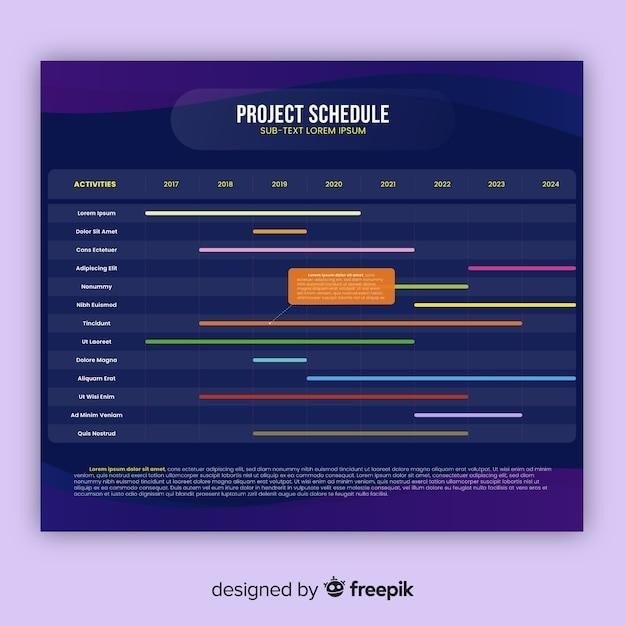System Design Interview⁚ An Insiders Guide (Volume 2)
This book can be seen as a sequel to the book⁚ System Design Interview ⏤ An Insiders Guide. It covers a different set of system design interview questions and solutions. Although reading Volume 1 is helpful, it is not required. This book should be accessible to readers who have a basic understanding of distributed systems. Read amp; Download PDF System Design Interview An Insiders Guide⁚ Volume 2 by Alex Xu, Sahn Lam, Update the latest version with high-quality. Try NOW!
Overview
System Design Interview An Insiders Guide Volume 2 is a comprehensive guide written by Alex Xu and Sahn Lam, two seasoned professionals in the tech industry. This book is the second volume in a series of system design interview guides focusing on advanced topics and real-world examples. It covers a wide range of system design concepts, including distributed systems, databases, caching, load balancing, and more. The book provides readers with a structured approach to tackling system design interview questions, helping them to understand the key concepts and develop practical solutions. The authors utilize their years of experience in the tech industry to offer valuable insights and practical advice that will benefit both aspiring and experienced software engineers. The book includes numerous real-world examples and case studies to illustrate the concepts discussed. This volume is designed to complement the first volume in the series, offering a deeper dive into more complex and nuanced topics. Readers can expect to gain a comprehensive understanding of the intricacies of system design, enabling them to confidently tackle real-world system design challenges and excel in their system design interviews.
Key Features
System Design Interview An Insiders Guide Volume 2 is a comprehensive guide that offers a wealth of knowledge and practical advice for anyone preparing for system design interviews. It features a unique combination of theoretical concepts and real-world examples, allowing readers to grasp the intricacies of system design and apply their knowledge in practical situations. This book goes beyond the basics, delving into advanced topics such as distributed systems, database design, caching strategies, and load balancing techniques. The authors provide a structured approach to problem-solving, enabling readers to break down complex system design problems into manageable steps. The book is packed with practical examples and case studies that demonstrate how to design and implement real-world systems, making it an invaluable resource for both aspiring and experienced software engineers. With its comprehensive coverage of key system design concepts and its emphasis on practical application, System Design Interview An Insiders Guide Volume 2 stands as a valuable companion for anyone seeking to excel in system design interviews and build robust, scalable software systems.
Target Audience
System Design Interview⁚ An Insiders Guide (Volume 2) is specifically designed for individuals seeking to excel in system design interviews, particularly those targeting roles in software engineering, distributed systems, and cloud computing. This book caters to a broad audience, ranging from aspiring software engineers who are new to system design concepts to experienced professionals looking to sharpen their skills and prepare for challenging interviews. The content is structured to be accessible to individuals with a basic understanding of computer science fundamentals and distributed systems. Whether you’re a recent graduate, a seasoned developer, or someone transitioning into a system design role, this book provides the necessary knowledge and practical guidance to confidently navigate the complexities of system design interviews. The authors’ clear explanations and real-world examples make the book suitable for both self-learning and structured preparation programs. The book’s comprehensive approach ensures that individuals at all levels can benefit from its insights and strategies for success.
Content Overview
System Design Interview⁚ An Insiders Guide (Volume 2) delves into a diverse range of system design topics, providing in-depth insights and practical solutions for real-world challenges. The book covers a comprehensive set of system design interview questions and solutions, focusing on advanced topics not covered in the first volume. Each chapter is dedicated to exploring a specific system design concept, offering a detailed breakdown of its principles, implementation strategies, and potential trade-offs. From designing proximity services and distributed message queues to tackling real-time gaming leaderboards and payment engines, the book provides a structured framework for tackling complex system design problems. The authors’ expertise in the field shines through in their clear explanations, practical examples, and insightful discussions of best practices. This comprehensive approach ensures that readers are equipped with the necessary knowledge and skills to confidently design scalable and reliable systems.
Chapter 1⁚ Proximity Services
This chapter delves into the intricate world of proximity services, a fundamental component of many modern applications. The authors provide a thorough exploration of the key concepts, design considerations, and architectural patterns involved in building robust and efficient proximity services. The chapter dissects real-world examples, including the design of Tencent’s location-based services, showcasing how proximity services are used to enhance user experiences and enable new functionalities. Readers will gain a deep understanding of the challenges associated with handling large volumes of location data, optimizing query performance, and ensuring data consistency. Through a combination of theoretical explanations and practical insights, the authors equip readers with the necessary knowledge to design and implement scalable and performant proximity services, making them a valuable asset in any system design interview.
Chapter 2⁚ Nearby Friends
Chapter 2 dives deep into the design of “Nearby Friends” features, a common element in social networking platforms. The authors explore the intricacies of building a system that efficiently discovers and displays nearby users, taking into account user privacy, location accuracy, and scalability. The chapter dissects the design of Amazon’s “Nearby Friends” feature, highlighting its core components and trade-offs. Readers will gain a comprehensive understanding of the challenges involved in managing user location data, implementing efficient proximity search algorithms, and balancing privacy concerns with functionality. The chapter also delves into the use of geospatial indexing techniques and the role of distributed databases in handling large volumes of location data. By the end of this chapter, readers will possess the knowledge and skills to design and implement robust “Nearby Friends” features, a key component of modern social networking applications.
Chapter 3⁚ Distributed Message Queue
Chapter 3 focuses on the critical role of distributed message queues in modern system architectures. The authors delve into the intricacies of designing a robust and scalable message queue system, highlighting the core concepts of message persistence, message ordering, and message delivery guarantees. The chapter explores various popular message queue technologies, including Apache Kafka, RabbitMQ, and Amazon SQS, comparing their strengths and weaknesses. Readers will learn about the importance of message brokers, message consumers, and the strategies for handling message failures and message acknowledgements. The chapter also discusses the challenges of ensuring message consistency and data integrity across distributed systems. By the end of this chapter, readers will be equipped with a deep understanding of distributed message queues, their diverse applications, and the design considerations for building high-performance message-driven systems.
Chapter 4⁚ Real-time Gaming Leaderboard
Chapter 4 delves into the design of a real-time gaming leaderboard system, a crucial component for competitive gaming experiences. The chapter explores the challenges of maintaining real-time updates for a large number of players, ensuring data consistency across a distributed environment, and handling high volumes of data writes and reads. Readers will learn about the trade-offs between consistency and availability, the importance of data partitioning and sharding strategies, and the use of caching mechanisms to optimize leaderboard performance. The chapter also covers the complexities of handling concurrent updates, implementing leader election algorithms for distributed consistency, and designing a robust system that can withstand player churn and game events. By the end of the chapter, readers will gain valuable insights into the architectural considerations for building a real-time gaming leaderboard system that provides a seamless and engaging experience for gamers.
Availability and Formats
The book “System Design Interview⁚ An Insiders Guide (Volume 2)” is available in both digital and physical formats, catering to the preferences of readers. The digital copy can be accessed through the author’s website, ByteByteGo, providing a convenient and readily available option for immediate access. For those who prefer the tangible experience of a physical book, Volume 2 is also available for purchase through online retailers like Amazon. This dual-format approach ensures accessibility and caters to the diverse reading habits of potential readers. Whether you prefer the convenience of a digital download or the satisfaction of holding a physical copy, “System Design Interview⁚ An Insiders Guide (Volume 2)” offers a choice that aligns with your individual needs and preferences.

Author Information
The authors of “System Design Interview⁚ An Insiders Guide (Volume 2)” are Alex Xu and Sahn Lam, both seasoned professionals in the technology industry. Their expertise in system design and their experience in conducting and preparing for such interviews make them uniquely qualified to guide readers through the intricacies of this crucial process. They bring a wealth of knowledge and practical insights to the table, offering readers a comprehensive and authoritative guide to acing system design interviews. Their combined experience and deep understanding of the subject matter ensure that the book is both informative and insightful, providing readers with the tools and strategies they need to confidently navigate the challenges of system design interviews.
Comparison to Volume 1
While “System Design Interview⁚ An Insiders Guide (Volume 2)” can be viewed as a continuation of the first volume, it is not strictly a prerequisite. Volume 2 delves into more advanced topics and explores real-world examples, providing a deeper dive into the nuances of system design. It is designed to complement the first volume, expanding on the foundational concepts introduced in the initial guide. The authors acknowledge that while reading Volume 1 is beneficial, it is not mandatory. Readers with a solid understanding of distributed systems can directly benefit from Volume 2, as it focuses on building upon that existing knowledge. Both volumes offer valuable insights and practical guidance, but Volume 2 caters to a more advanced audience seeking to further enhance their system design skills.
Reviews and Feedback
The book has received generally positive feedback from readers and reviewers. Many praise its comprehensive approach to system design interview preparation. Readers appreciate the inclusion of real-world examples and the systematic framework provided to tackle complex design challenges. Some have commented on the book’s clarity and organization, making it easy to follow and learn from. The authors’ experience in the tech industry is evident in the practical insights and advice shared throughout the book. However, some readers have expressed that the book is more suited for individuals with a strong foundation in computer science and distributed systems. Overall, “System Design Interview⁚ An Insiders Guide (Volume 2)” is considered a valuable resource for those preparing for system design interviews, offering a comprehensive guide to tackling common challenges and showcasing real-world application scenarios.


















